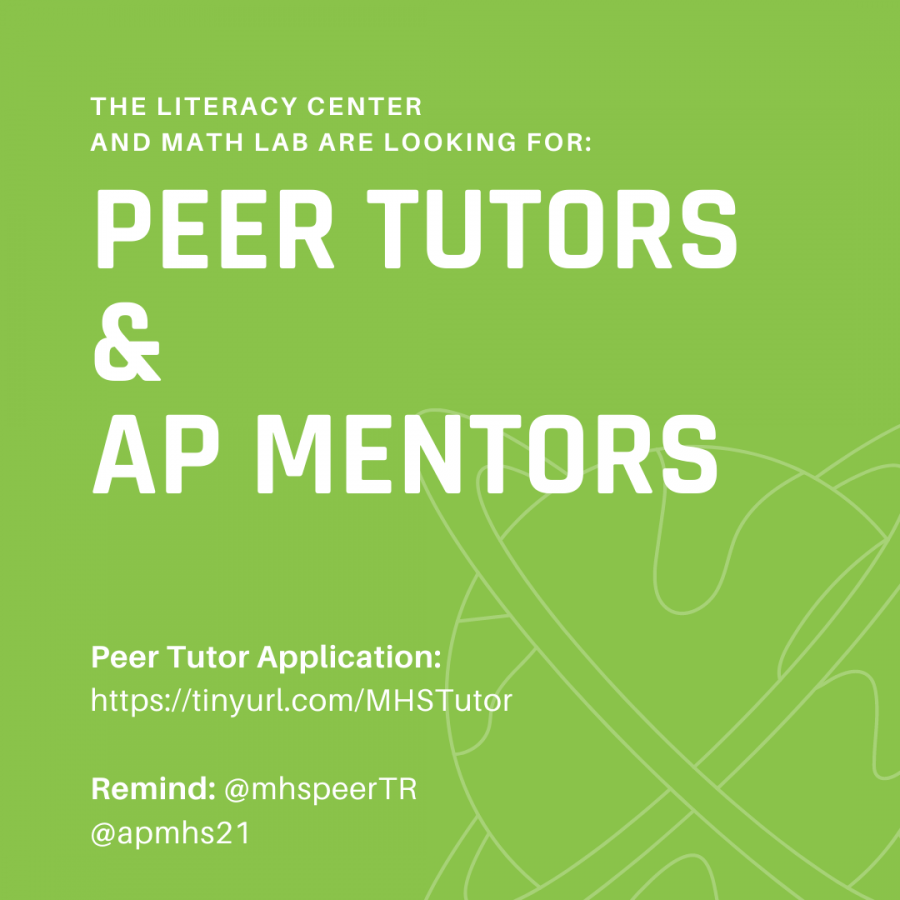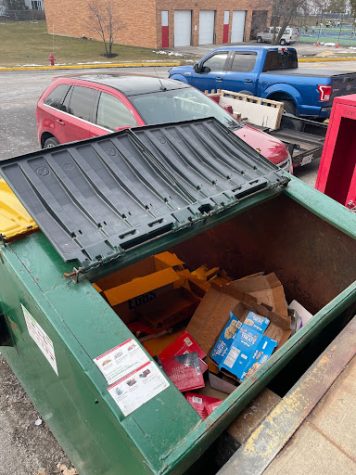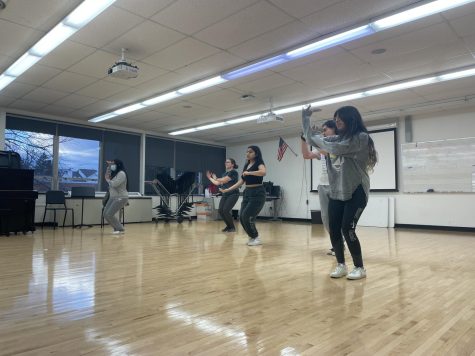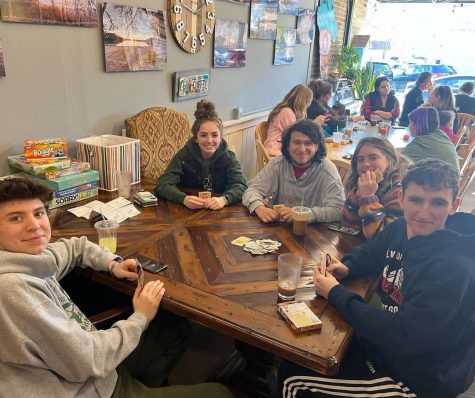Staff member transfers tutoring program online
Photo Courtesy of @mundeleinhighschool on Instagram
Posted to the MHS Instagram account @mundeleinhighschool, staff members Anna Grig and Hope Babowice from the Literacy Center use the flier to recruit students for the now online peer tutoring program– a result of the global COVID-19 pandemic forcing the school year to start remote.
December 4, 2020
While in the midst of a global pandemic that has resulted in remote learning for MHS, Literacy Center Specialist Anna Grig has adapted the peer tutoring program to coincide with virtual learning for the 2020-2021 school year.
“Obviously, because of COVID, it’s been a little bit more challenging,” Grig said. “Some students have hesitated to come out just because it’s more time from [their] schedule.”
The Zoom link for this resource can be found on the D120 website through the Literacy Center page, which is under the Academics tab.
“This resource has been super accessible for people to pop in any time throughout the school day,” Senior and Co-President Swetha Chandrasekar said. “Plus, there are many peer tutors on the link throughout the day who are always ready to welcome students to our virtual Lit. Center.”
From 7:30 a.m. to 4:30 p.m. students can log in to receive help with their array of classes throughout the week. In different breakout rooms, tutors can be found working one-on-one with students, helping others in groups or even “tutoring a tutor.”
On days where student turnout is low, some tutors will hop into breakout rooms with one another to help each other with homework and/or specific classes. They are still ready and “on deck,” though, as they wait for students to arrive.
“What’s nice, too, is that sometimes the sessions have kind of turned into [the tutors] venting out some of their feelings when it’s just us few,” Grig said. “It’s been nice; they’ve gotten to talk with some other people that they don’t usually see.”
While tutors are working with students in breakout rooms for specific subjects/study groups, Grig can also be found helping students; in the main room, she helps just about anyone with just about anything.
According to Senior and Co-President Ilya Vynnyk, virtual tutoring is a great way for students to get extra help in their classes, outside of teacher office hours.
“If a student needs help with an essay, social studies class– World Studies, U.S. History, etc.– or any other class, this is where a student should go,” Vynnyk said. “You can get help from over 50 tutors and be helped with just about anything.”
At the same time as general tutoring, students can be found logging onto the Literacy Center Zoom call to join the AP study groups, where AP mentors lead study sessions for specific classes.
According to Hope Babowice, Literacy Center Specialist, there’s a specific schedule for each group. For example, AP Psychology meets every Tuesday morning, AP U.S. History meets every Tuesday after school and Physics meets every Wednesday morning and Thursday after school.
Attending the Literacy Center Zoom calls is also a way to make new friends and improve one’s communication skills, as stated by both peer tutoring presidents.
One thing Grig said she always stresses for the tutors to do is to “make a connection.” Whether that be through cracking a joke or telling a story, their goal as tutors is to make students feel comfortable. To get them ready, she has them attend a training with other tutors and puts them into small groups to play out different tutoring scenarios they might encounter.
While getting help through a screen can be different from in-person support, each tutor has found his or her own way to help, whether that is through an online whiteboard feature when sharing one’s screen, having documents shared with each other, or writing on a notebook and holding it up to the camera.
“I think students really miss collaborating together in a group, sitting next to each other, but for the circumstances in which we’re under now, I think that this is a really great alternative,” Grig said. “This is something that could continue even beyond once we start going back to school. I think an online portion could still be really great.”


![MHS Alum Trey Baker hosting a MBK rising event on February ninth at the MHS annex. Said Baker, “I’m just really excited [and] super grateful for the community of Mundelein, for our educators, for our administration, at MHS who are really buying into this.”](https://mhsmustang.com/wp-content/uploads/2023/03/TreyBaker-350x475.jpg)

